If you are struggling with thoughts of suicide or self-harm, you are not alone.
The number of people who experience suicidal ideation in the U.S. every year numbers in the millions. You are not selfish or a bad person for feeling this way.

Be assured that most people who experience moments of intense suicidal feelings are able to recover and live fulfilling lives.
Hold that in mind and keep reading. Let’s take a moment to take stock of your situation:
If you have already tried to self-harm today or are feeling intense suicidal urges, call 911 immediately or have a friend or family member get you to mental health urgent care or an emergency room.

If you have not yet tried to harm yourself but are feeling strong suicidal thoughts or urges to self-harm, please contact a crisis counselor right away:
Fully recovering from your suicidal feelings will require long-term help, but your focus right now should be staying safe through your current suicidal episode.
If you have not yet reached crisis point, here are the steps you should follow to stay safe while you weather the current storm:

If you are experiencing persistent suicidal ideation of any sort, reach out to someone you trust as soon as possible and tell them how you are feeling. Even if you are not likely to hurt yourself right now, having somebody who knows what you are struggling with will make it easier to get help.
You may not feel like there’s much the other person can do, or you may not want to worry them. Try to remember that your perception of your own worth is distorted when you are suicidal.
You are not a burden. You are worthy of help. The first and most important step to keeping yourself safe is to reach out to a friend, family member, or medical professional who can provide you with that help.

Once you have somebody you trust, get their help to remove anything dangerous from your presence. Your trusted person can hold onto any knives, firearms, pills, chemicals, or anything else you could use to harm yourself until you feel safe again.
This is easiest if you have a cabinet or safe where you can lock everything up and turn over the key to your loved one. But any means of keeping these items out of your hands is better than nothing.

Giving yourself a sensory distraction of some sort can help to calm the immediate impulse to self harm. Listen to music, take a walk, lay on the floor (yes, that can be enough), or pet an animal.
If the urge is acute, sensations that are intense but not harmful such as placing ice cubes on your skin can help to keep it at bay. If you just need to divert your attention until the worst of the feelings pass, something mundane and harmless like a movie, game, or craft might help keep your mind occupied until you feel safer.

If you are currently safe but feel your situation may escalate toward self-harm, work on creating a plan in case you enter crisis mode and can’t think clearly.
Save.org has provided this excellent safety plan template where you can write down the steps to follow and people to contact if you start going into crisis. Share this plan with your loved ones, doctors, trusted religious leaders, or anyone else you think might be able to recognize when you are in distress and can take action.

Once the episode has passed and you are in an okay place, you should try to secure some help toward your long-term recovery. It is time to make an appointment with a doctor or mental health professional so they can help you work toward feeling better.
If you are severely depressed, you may be unable to motivate yourself to go through all the necessary steps of scheduling and attending an appointment. It is okay to ask for help with this. You are not a burden. Don’t hesitate to lean on someone in your life to set up your appointment for you, and even to help you get there if necessary.

If financial hardship or other barriers to your seeking mental health treatment are already one of the contributing factors to your suicidal thoughts, do not let these instructions discourage you.
No matter your situation, there are resources for you on both national and local levels. Here are some of the options that may be available to you:

Most states have some level of community mental health services. These can usually be found through the Department of Human Services on your state’s website. Private non-profits can also offer free or sliding scale mental health treatment. A good place to start is your local YMCA or similar community center.

Many churches provide support resources for their congregations. Your church leaders may offer free individual counseling for those who need it. Some congregations may be willing to provide financial assistance to members who need help seeking treatment.
It is also very common for religious communities to sponsor support groups or group therapy. These are often open to the general public, so you do not need to be a member of the congregation or be religious to attend.

There are widely available resources online for people experiencing feelings like yours. Free crisis chat lines are obviously a good place to turn if you are in active distress.
For the process of recovery, many online therapy platforms offer reduced rates for those who are struggling financially. Online support groups can also provide a lot of connection and stability in times of need.
If you are a student, your university almost certainly has a resource center where students can receive mental health assistance. Whether they can provide you counseling on site or help you get in touch with affordable outside treatment, your school can be an incredibly helpful resource.

There are training clinics for every sort of medical practice, from family medicine to mental health, and they often operate at much more affordable rates than other clinics.
The training physicians there are in the final stages of earning their degrees and are overseen by more experienced attending physicians, so the standard of care provided will be exactly the same as anywhere else.
Most people don’t realize how often mental health clinics are willing to work with people who are financially insecure so they can still have access to the treatment they need. Especially if you have been struggling with thoughts of suicide, don’t hesitate to ask a nearby clinic if they can help you work something out.
Once your medical needs are taken care of and you are feeling a little more stable, you can begin to take other small steps to help in your recovery. Small things like reestablishing interest in your hobbies and improving your self-care habits can begin to make a huge difference in how you feel on a daily basis.

Larger steps involve things like finding a broader community of support among others with experiences similar to yours. These can help you progress in your recovery without shame—and provide plenty of support to fall back on in case things ever get difficult again.
Things may seem dire and hopeless right now, but they can and will get better. It is always okay to ask for help and to seek out a new support system if yours has failed you.
Once again, if you are in crisis, don’t hesitate to contact any of these resources:
No matter what you’re feeling right now, you will get through this with time and help. Life will begin to feel kinder and a lot more manageable.
If you are struggling with thoughts of suicide or self-harm, you are not alone.
The number of people who experience suicidal ideation in the U.S. every year numbers in the millions. You are not selfish or a bad person for feeling this way.

Be assured that most people who experience moments of intense suicidal feelings are able to recover and live fulfilling lives.
Hold that in mind and keep reading. Let’s take a moment to take stock of your situation:
If you have already tried to self-harm today or are feeling intense suicidal urges, call 911 immediately or have a friend or family member get you to mental health urgent care or an emergency room.

If you have not yet tried to harm yourself but are feeling strong suicidal thoughts or urges to self-harm, please contact a crisis counselor right away:
Fully recovering from your suicidal feelings will require long-term help, but your focus right now should be staying safe through your current suicidal episode.
If you have not yet reached crisis point, here are the steps you should follow to stay safe while you weather the current storm:

If you are experiencing persistent suicidal ideation of any sort, reach out to someone you trust as soon as possible and tell them how you are feeling. Even if you are not likely to hurt yourself right now, having somebody who knows what you are struggling with will make it easier to get help.
You may not feel like there’s much the other person can do, or you may not want to worry them. Try to remember that your perception of your own worth is distorted when you are suicidal.
You are not a burden. You are worthy of help. The first and most important step to keeping yourself safe is to reach out to a friend, family member, or medical professional who can provide you with that help.

Once you have somebody you trust, get their help to remove anything dangerous from your presence. Your trusted person can hold onto any knives, firearms, pills, chemicals, or anything else you could use to harm yourself until you feel safe again.
This is easiest if you have a cabinet or safe where you can lock everything up and turn over the key to your loved one. But any means of keeping these items out of your hands is better than nothing.

Giving yourself a sensory distraction of some sort can help to calm the immediate impulse to self harm. Listen to music, take a walk, lay on the floor (yes, that can be enough), or pet an animal.
If the urge is acute, sensations that are intense but not harmful such as placing ice cubes on your skin can help to keep it at bay. If you just need to divert your attention until the worst of the feelings pass, something mundane and harmless like a movie, game, or craft might help keep your mind occupied until you feel safer.

If you are currently safe but feel your situation may escalate toward self-harm, work on creating a plan in case you enter crisis mode and can’t think clearly.
Save.org has provided this excellent safety plan template where you can write down the steps to follow and people to contact if you start going into crisis. Share this plan with your loved ones, doctors, trusted religious leaders, or anyone else you think might be able to recognize when you are in distress and can take action.

Once the episode has passed and you are in an okay place, you should try to secure some help toward your long-term recovery. It is time to make an appointment with a doctor or mental health professional so they can help you work toward feeling better.
If you are severely depressed, you may be unable to motivate yourself to go through all the necessary steps of scheduling and attending an appointment. It is okay to ask for help with this. You are not a burden. Don’t hesitate to lean on someone in your life to set up your appointment for you, and even to help you get there if necessary.

If financial hardship or other barriers to your seeking mental health treatment are already one of the contributing factors to your suicidal thoughts, do not let these instructions discourage you.
No matter your situation, there are resources for you on both national and local levels. Here are some of the options that may be available to you:

Most states have some level of community mental health services. These can usually be found through the Department of Human Services on your state’s website. Private non-profits can also offer free or sliding scale mental health treatment. A good place to start is your local YMCA or similar community center.

Many churches provide support resources for their congregations. Your church leaders may offer free individual counseling for those who need it. Some congregations may be willing to provide financial assistance to members who need help seeking treatment.
It is also very common for religious communities to sponsor support groups or group therapy. These are often open to the general public, so you do not need to be a member of the congregation or be religious to attend.

There are widely available resources online for people experiencing feelings like yours. Free crisis chat lines are obviously a good place to turn if you are in active distress.
For the process of recovery, many online therapy platforms offer reduced rates for those who are struggling financially. Online support groups can also provide a lot of connection and stability in times of need.
If you are a student, your university almost certainly has a resource center where students can receive mental health assistance. Whether they can provide you counseling on site or help you get in touch with affordable outside treatment, your school can be an incredibly helpful resource.

There are training clinics for every sort of medical practice, from family medicine to mental health, and they often operate at much more affordable rates than other clinics.
The training physicians there are in the final stages of earning their degrees and are overseen by more experienced attending physicians, so the standard of care provided will be exactly the same as anywhere else.
Most people don’t realize how often mental health clinics are willing to work with people who are financially insecure so they can still have access to the treatment they need. Especially if you have been struggling with thoughts of suicide, don’t hesitate to ask a nearby clinic if they can help you work something out.
Once your medical needs are taken care of and you are feeling a little more stable, you can begin to take other small steps to help in your recovery. Small things like reestablishing interest in your hobbies and improving your self-care habits can begin to make a huge difference in how you feel on a daily basis.

Larger steps involve things like finding a broader community of support among others with experiences similar to yours. These can help you progress in your recovery without shame—and provide plenty of support to fall back on in case things ever get difficult again.
Things may seem dire and hopeless right now, but they can and will get better. It is always okay to ask for help and to seek out a new support system if yours has failed you.
Once again, if you are in crisis, don’t hesitate to contact any of these resources:
No matter what you’re feeling right now, you will get through this with time and help. Life will begin to feel kinder and a lot more manageable.

The first step to suicide intervention is recognizing warning signs.
Once the signs have been recognized, it’s equally important that something is done about it. We’re here to help you understand what you can do, what will help, and what to avoid.
People who are struggling may not be very forthcoming about feeling suicidal. However, there may still be signs that might help loved ones know when to approach them with support or intervention.
Major warning signs someone may attempt suicide include:
These indicators are serious and require intervention, but may not be an immediate emergency. However, if the person is directly threatening suicide, posting on social media about death or suicide, or researching or seeking access to methods of suicide, call 911 immediately. *

* Threats of suicide should always be taken seriously, but if they are coming from an abusive partner—especially if you are trying to leave—take measures to secure your own safety first. A suicidal abuser may also try to harm their partner before taking their own life. Get to safety and contact emergency services.
Signs can be subtle, or even misleading, so don’t blame yourself if some things slip your notice and things come to a crisis point. Do your best to invest in your close relationships so you can more easily notice when something is off. This is especially important if your loved one is experiencing mental illness.

No matter the circumstances, understand that missing signs does not mean you have failed them.
It is sometimes the case that a person who has been depressed or in crisis for a long time will suddenly become uncharacteristically calm or upbeat if they have decided to attempt suicide. This can happen because they feel they have found a simple resolution to their problems and that an end to their suffering is in sight.
This is why it is so important for loved ones to be aware of the person’s feelings and behavior patterns so they might recognize when a sudden positive change in mood may be cause for concern.
If you have noticed warning signs in your loved one but they have not spoken to you directly about feeling suicidal, the next step is to speak to them. Starting a dialogue can feel awkward or invasive, but your willingness to talk may give the person permission to speak where they previously felt they couldn’t.

Some questions to ask to start a conversation may include:
These questions can help you assess how serious the danger is and respond accordingly.

The knowledge that a loved one may be at risk of suicide can be overwhelming. Whether they have directly confided in you about their struggles, or you have noticed concerning behavior from them, it can be difficult to know what to do next.
The first thing to know is that your intervention is already a big step toward keeping your loved one safe. Your response may not be perfect, but your willingness to act on their behalf is already going a long way toward bringing them the support they need during this time.

There are a few things to avoid when intervening with someone who is feeling suicidal.

Once you have talked to your loved one about their suicidal thoughts, it is important not only to take action, but to follow through no matter what. Even a person who is willing to seek help may not have the motivation or ability to do so on their own, so your own motivated support is crucial.
If the threat is not immediate, you can start by helping your loved one find a doctor or mental health professional to get them on a path to recovery. You may need to go so far as to make the first phone call, or even to take them to their appointment.
People suffering from severe depression have a difficult time following through on these things, so it may be up to you to make sure the initial steps toward seeking help are executed.

If your loved one has told you about their plans to take their life:
Don’t keep secrets. Even if it was told to you in confidence, and even if they are upset with you for telling, their safety is far more important.
Reach out for help. If you are not in a direct position to help and monitor your loved one, contact someone who is.

If they are a minor, contact parents and school counselors, as well as any other trusted adults in their life.
If they are an adult, contact partners, roommates, close family members, or any others who may be in a position to help you keep track of the person and find them help.

Remove access to dangerous items. If you are directly responsible for the person, you can help ensure their safety while you work on getting them help by staying aware of their location and restricting access to any means of self-harm (pills, weapons, access to heights or busy roads, etc.).
Though suicidal ideation and planning may be ongoing and persistent, the crisis period during which someone is likely to actively attempt suicide is usually short. Until it passes, this is the most important time to provide support and reduce access to lethal means.
Finally, if at any point you suspect the situation has escalated to become an emergency, don’t hesitate to call 911. You can also call the 988 Crisis & Suicide Prevention Lifeline for guidance on what to do in your specific situation.
Suicide can be prevented. The more quickly a person’s loved ones notice and take action toward helping them, the more likely they will be able to get the help they need. However, please remember, it is not your fault if your loved one dies by suicide. No matter the outcome, your efforts are important, and your support could save a life.
Suicide is an incredibly complicated issue.
There are an overwhelming number of contributing factors, and it affects every demographic regardless of age, race, or social class. Factors affecting certain communities may, however, lead to higher suicidal ideation and behavior within those demographics.

In the United States, suicide is the third leading cause of death among people aged 15-24, and it is estimated to claim the lives of roughly 125 Americans every day. Risk factors are many and varied. They include, but are not limited to:
Statistics can be misleading on which demographics are most at risk of suicide. Among the highest-risk groups overall (teenagers and young adults), females are almost twice as likely to attempt suicide but males make up the majority of actual suicides.

This is due to a handful of different factors, most significantly social stigma preventing many males from seeking help when experiencing distress.
The likelihood of a teenager or young adult attempting suicide also rises significantly if that person is a member of the LGBTQ+ community, especially if they are lacking sufficient family or community support.

The risk can be greatly reduced if a person is surrounded by family or friends who are openly supportive and affirming of their sexuality or gender identity. Even more so if medical and community resources for helping them understand and affirm their identity are widely available.
Overall, in the U.S. there are around 45,000 suicides each year out of 1.1 million yearly suicide attempts. There are many organizations dedicated to keeping that number on a steady decline, including:

Overwhelmingly, the best means of early suicide prevention are:
These methods are not guaranteed, and there is still a very long way to go in managing this complex and serious public health issue, but education and awareness are an important first step.

No matter how overwhelming it may feel, intervention IS effective, and the more we continue to do so, the more lives will be saved. If you or a loved one are currently struggling with thoughts of self-harm, please stop right now and dial 988 on your phone, or text HOME to 741-741 to speak with a crisis counselor.
Every year in the United States alone, around 45,000 people die by suicide. This number represents an epidemic marked by an unprecedented rise in the number of suicide deaths in the U.S. since the early 2010s.
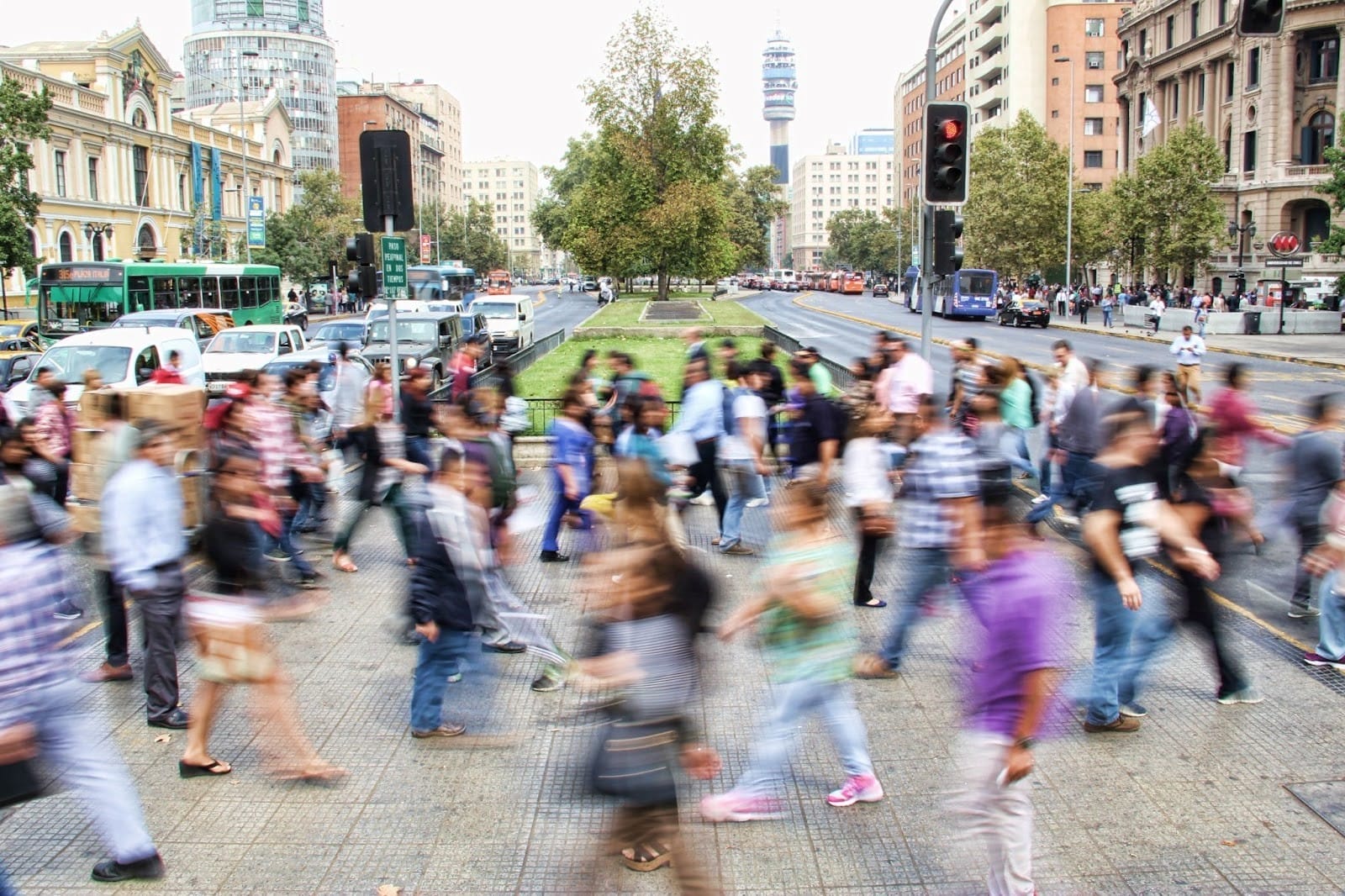
Suicide is an incredibly complicated issue. There are an overwhelming number of contributing factors, and it affects every demographic regardless of age, race, or social class. The prevalence and universal nature of suicide merit far more discussion nationwide. Unfortunately, because it is such an unpleasant and difficult issue, it remains a taboo topic in many communities.
In the face of such overwhelming statistics, it may seem impossible to make a difference. However, through awareness and effort, individuals and communities can work together to exponentially reduce suicide.
Effective suicide prevention happens at many different levels, ranging from individual to systemic, but direct prevention begins at the individual level.
This post will take you through effective steps you can take if you or a loved one are at risk of suicide or self-harm.

Suicide intervention on an individual level most often comes from the friends or family of someone struggling with suicidal feelings. However, it’s important to note that it can also come from the person struggling as well.
Not every individual experiencing suicidal thoughts or behavior will have the ability or the desire to intervene on their own behalf. But, if you are having thoughts of harming yourself, you don’t need to feel helpless in your own intervention.
Your life and your agency matter. If you feel capable of reaching out, you can start the ball rolling on your recovery and maintain some control over how and from whom you receive help.

Here are some steps for effective suicide prevention for yourself:
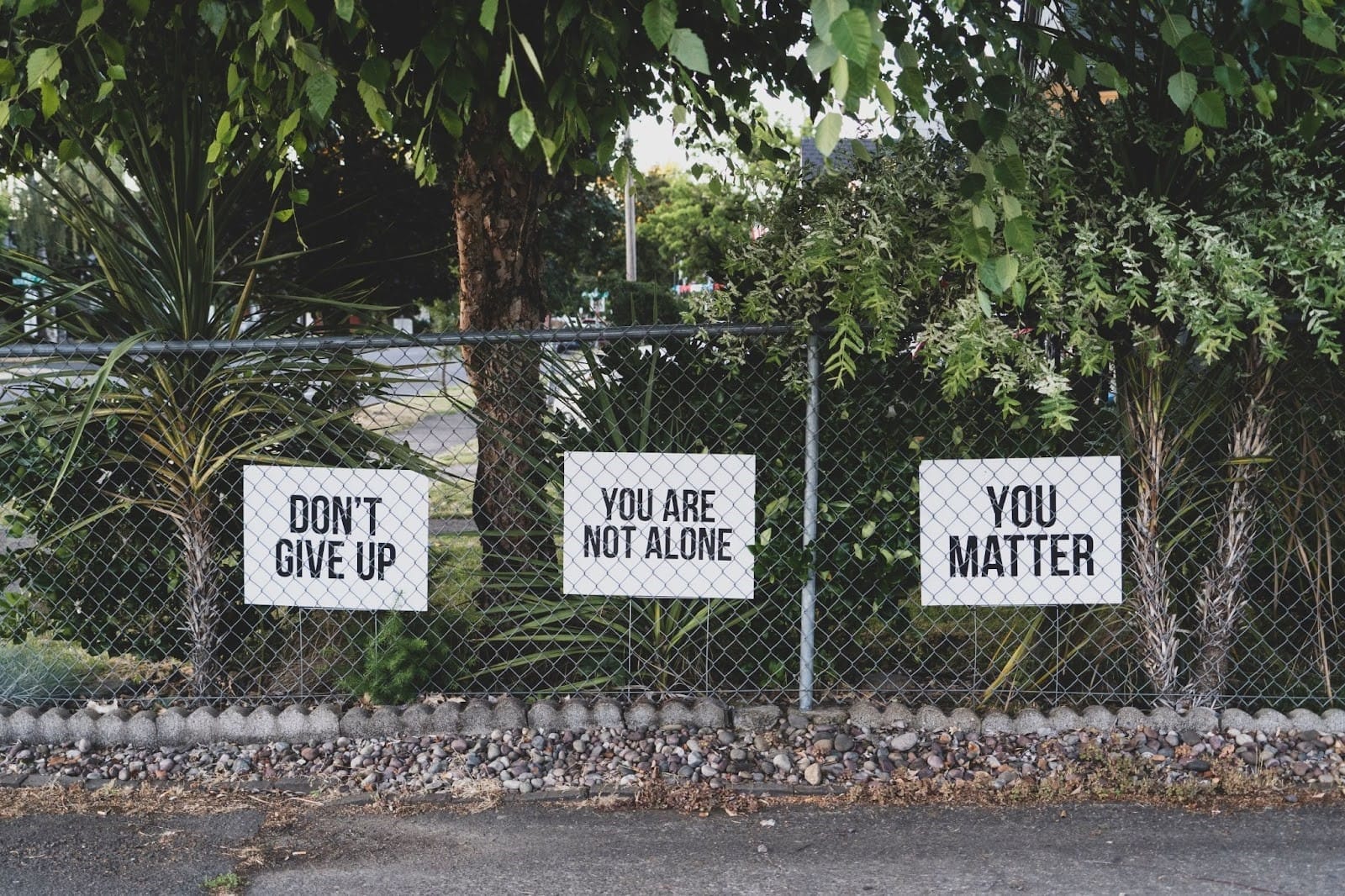

The Suicide Prevention Resource Center has provided this excellent safety plan template where you can write down a plan for if you enter crisis mode and are unable to think clearly. Share this plan with someone you trust who can recognize when you are in crisis and take action.
If you are in crisis and need help immediately, call 911 or have a friend or family member get you to mental health urgent care or an emergency room.
A suicidal person may not be capable of reaching out for help on their own. In those cases, it can fall to a friend or relative to notice the signs and intervene.
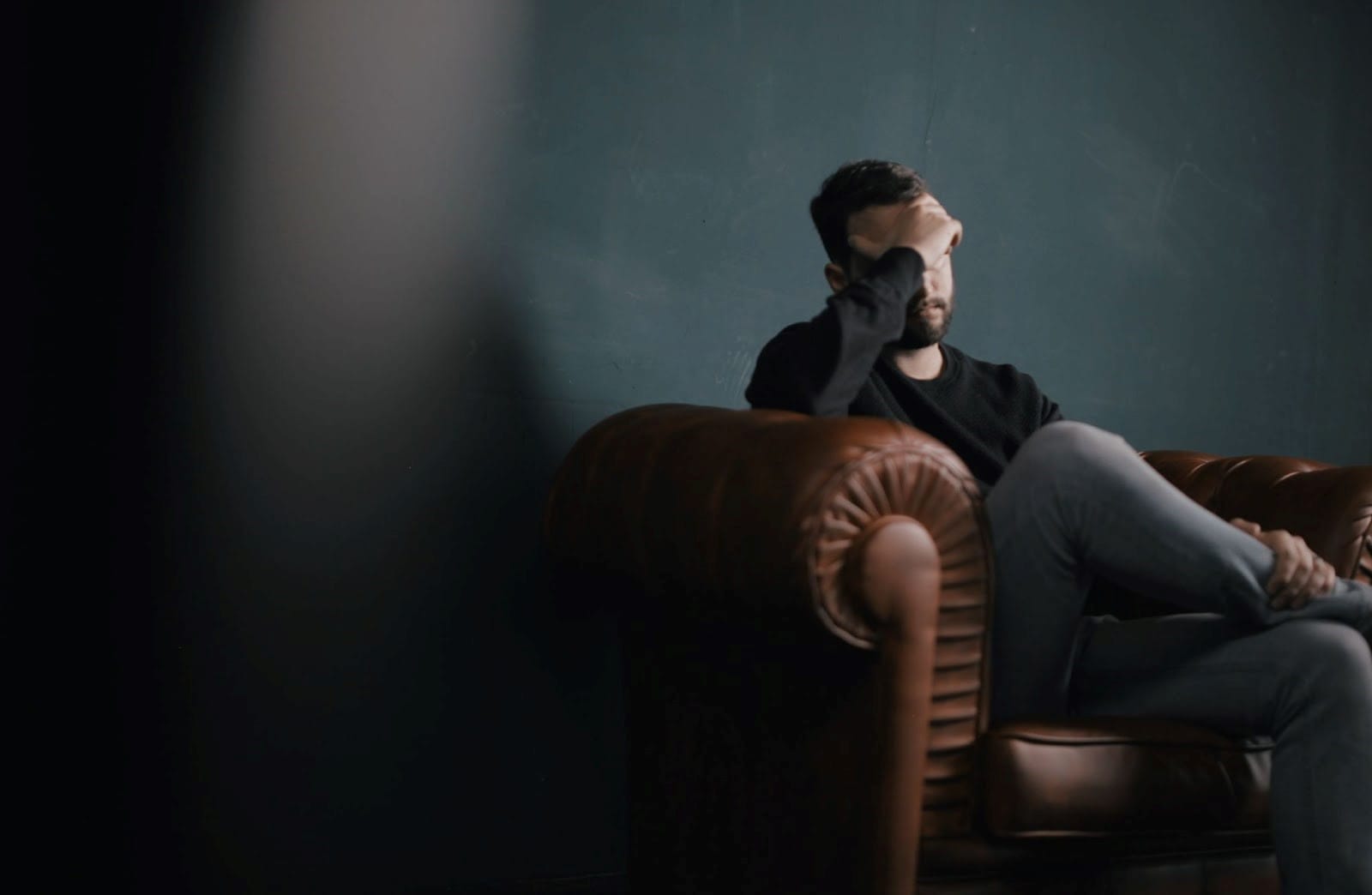
Here are some steps for effective suicide prevention for a loved one:

This is not the time for tough love. Do not try to convince the person that their problems aren’t that bad or that they are selfish for wanting to take their life. They need to know you are not disappointed in them for feeling this way and that you are taking their struggle seriously.

Your loved one may be too depressed or paralyzed to take action toward healing on their own, so they may need your help to take steps for long-term prevention as well. If so, it is crucial that you follow through on finding reliable help for them from your community or a professional.
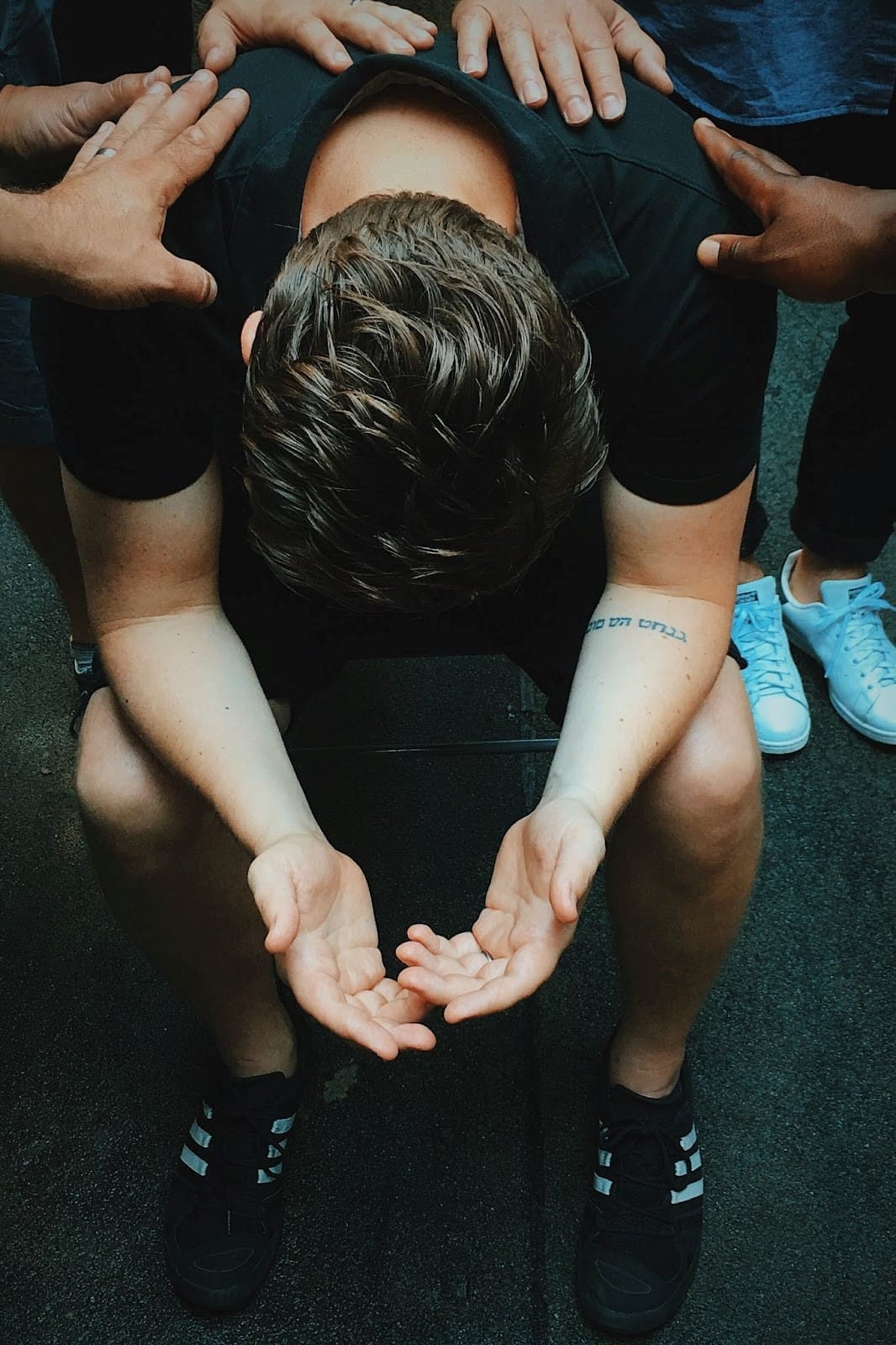
Whether it’s yourself or a loved one, a suicidal crisis can be a scary thing to navigate. That’s why we at Bio-One hope this guide will help you know how to intervene to keep yourself or the people you love safe.
Part of our mission is to provide community resources. That’s why we dedicate so much of our time to projects like this. We want to create a future where we never have to answer another suicide call again.
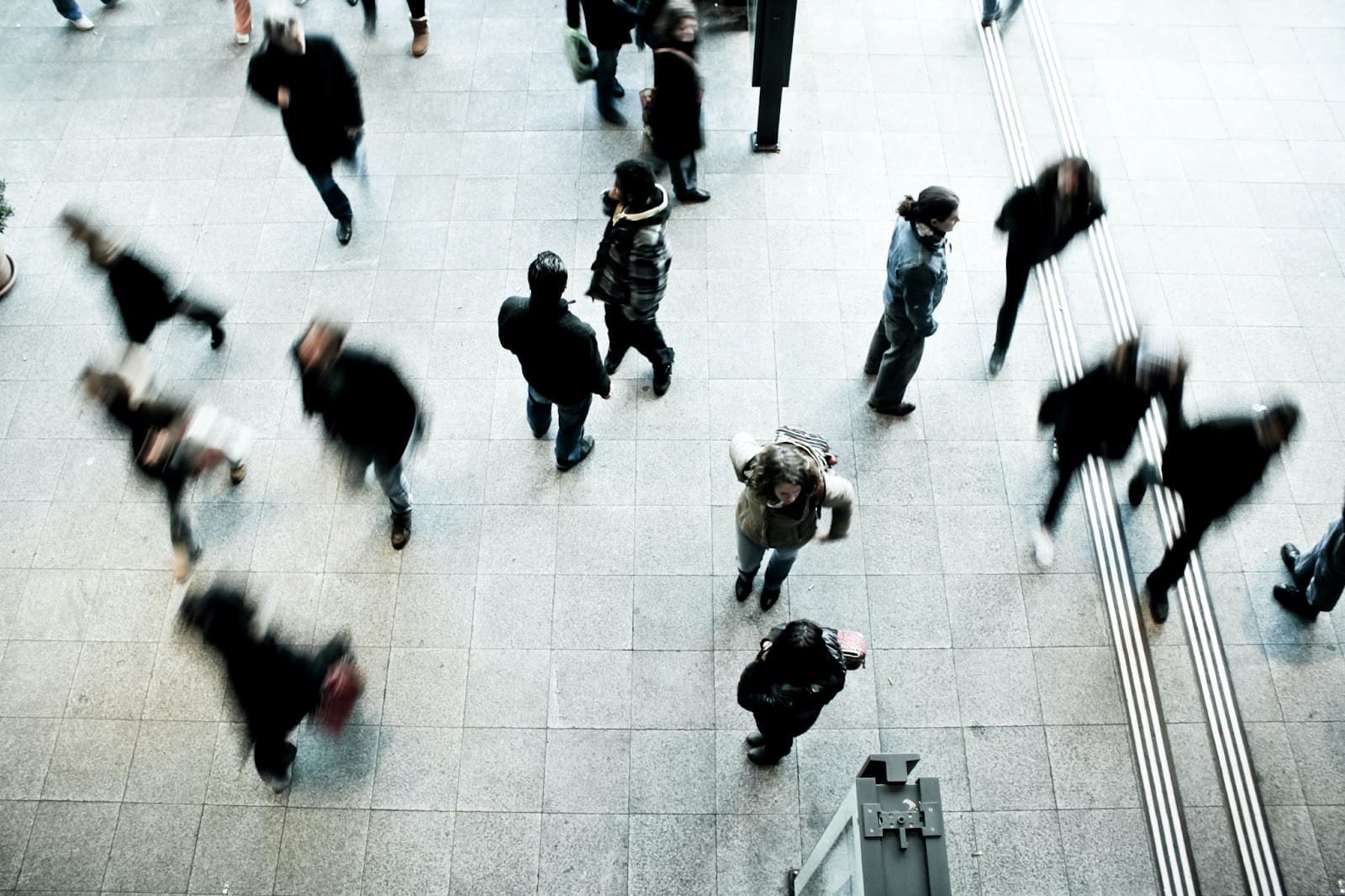
Suicide is currently an incredibly pressing issue in our world. In the United States, suicide is the third leading cause of death among people aged 15-24, and it is estimated to claim the lives of roughly 125 Americans every day.
With so many suffering in our country, and others suffering from mental illness and suicidal thoughts, it is important for all of us to know how to recognize when someone in our life is at risk of suicide.
However, it is not always readily apparent when someone is struggling with self-harm or planning to take their life. The signs can be subtle and easy to miss. We hope this guide can point out some things to look for so you can recognize when intervention is necessary.
Your awareness may save a life.

There is no singular cause of suicidal ideation or behavior. A variety of situations or life circumstances may be the catalyst for someone wanting to end their life. Risk factors include but are not limited to:

In most of these circumstances, severe mental illness is present—which can make the other issues all the more difficult to handle.
For someone who is suffering from one or more of these factors, it may feel like the only way out is to end their life. They may also feel their struggles make them a burden on others and that it would be better for everyone if they were gone.

There is no definitive way to determine who is most at risk. However, factors affecting certain communities may lead to higher suicidal ideation and behavior within those demographics.
No matter what, having access to support from family and community is a major factor in improving the odds of survival and recovery for a person struggling with suicidal ideation. This makes it crucial for as many people as possible to know how to recognize the signs and intervene.
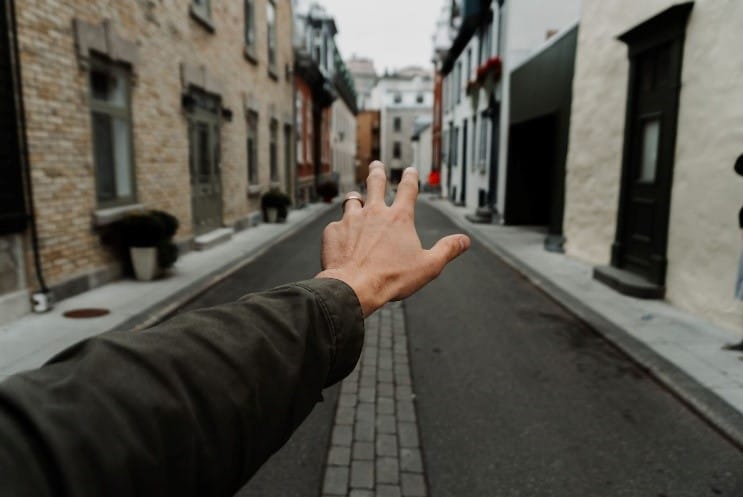
As previously mentioned, it is not always obvious when someone is struggling. A person who is feeling suicidal may not be very forthcoming, especially in communities where mental illness and suicide are not often discussed in a supportive manner.
Even so, there are some common signs to watch for that may indicate a loved one is in need of support or intervention.
Major warning signs someone may attempt suicide include:
These signs may or may not indicate an imminent suicide attempt, but they should be taken very seriously. Action should be taken as quickly as possible to provide individuals with these indicators of support and to help them find professional help to improve their situation and outlook.
There are likewise a few signs to watch for that may indicate the person is in immediate danger, including:

Any of these three signs should prompt you to immediately reach out to a mental health professional or to call or text the 988 Suicide & Crisis Lifeline for instructions on how you should respond.
If you become aware that the person is in crisis and immediately at risk of harming themselves, call 911 or bring them to an emergency room right away.
Don’t second guess your concern if you see these signs. No reaction is an overreaction when it comes to keeping your loved one safe.
Overwhelmingly, the best means of early suicide prevention are:
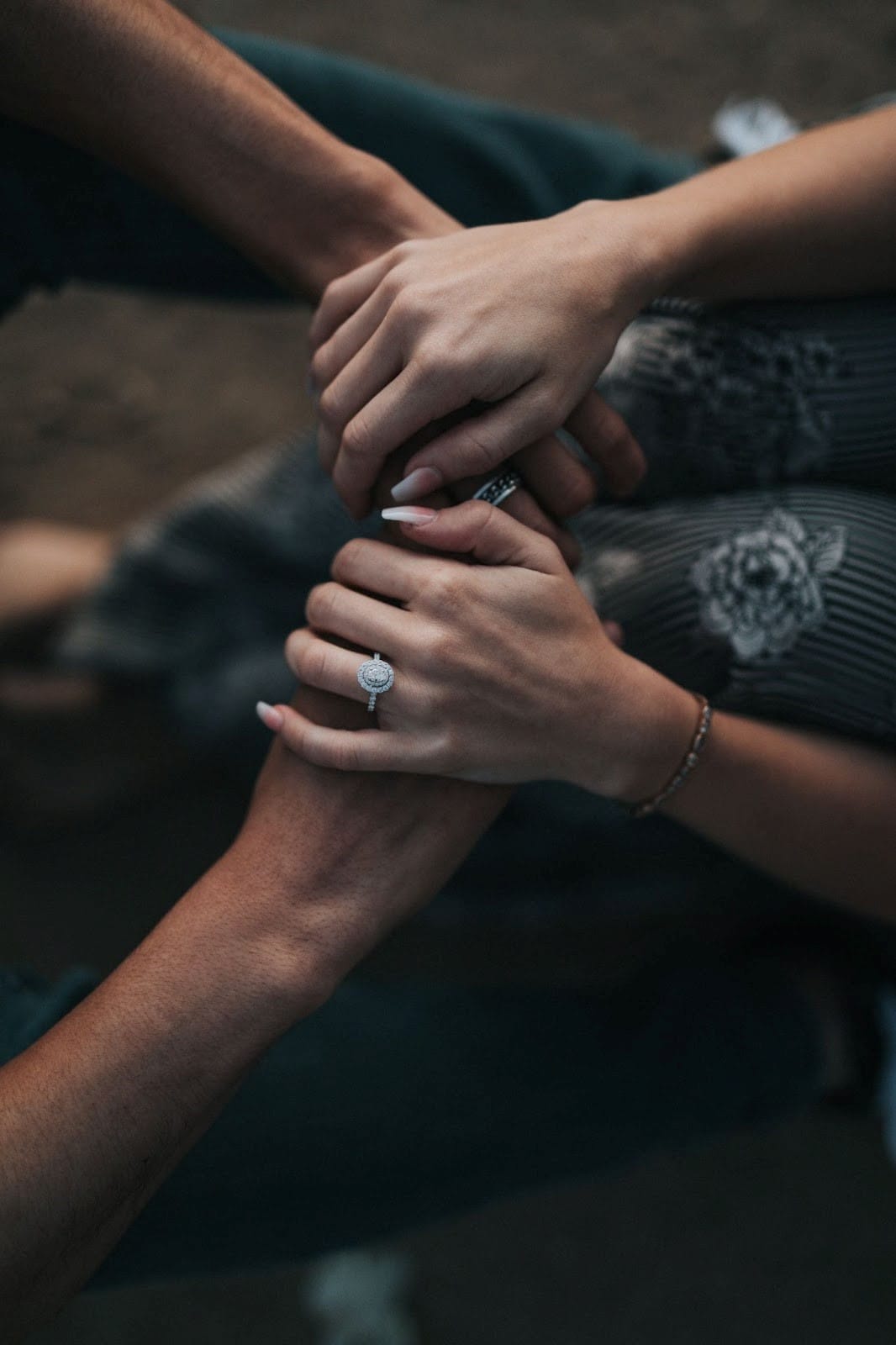
If your loved one has reached out to you for help, or if you have noticed any of the warning signs and the situation is not yet an emergency, the next steps are to begin intervention.
Talk to your loved one. If they have not yet confided in you, ask if they have been thinking about suicide, and listen without judgment as they talk about how they are feeling.
After establishing the need for help, involve other trusted members of the person’s family or community to create a support network for them as they navigate this difficult time.
Ultimately, anyone who is struggling with suicidal thoughts or behavior should receive help from a mental health professional.

Their current state of depression or hopelessness may not allow them to seek this help on their own. As part of your intervention, you may need to help them make an appointment with a professional and follow up. This help can ensure they are able to properly begin their road to recovery.
For more information on effective intervention and prevention, you can refer to our guide to effective suicide prevention here.
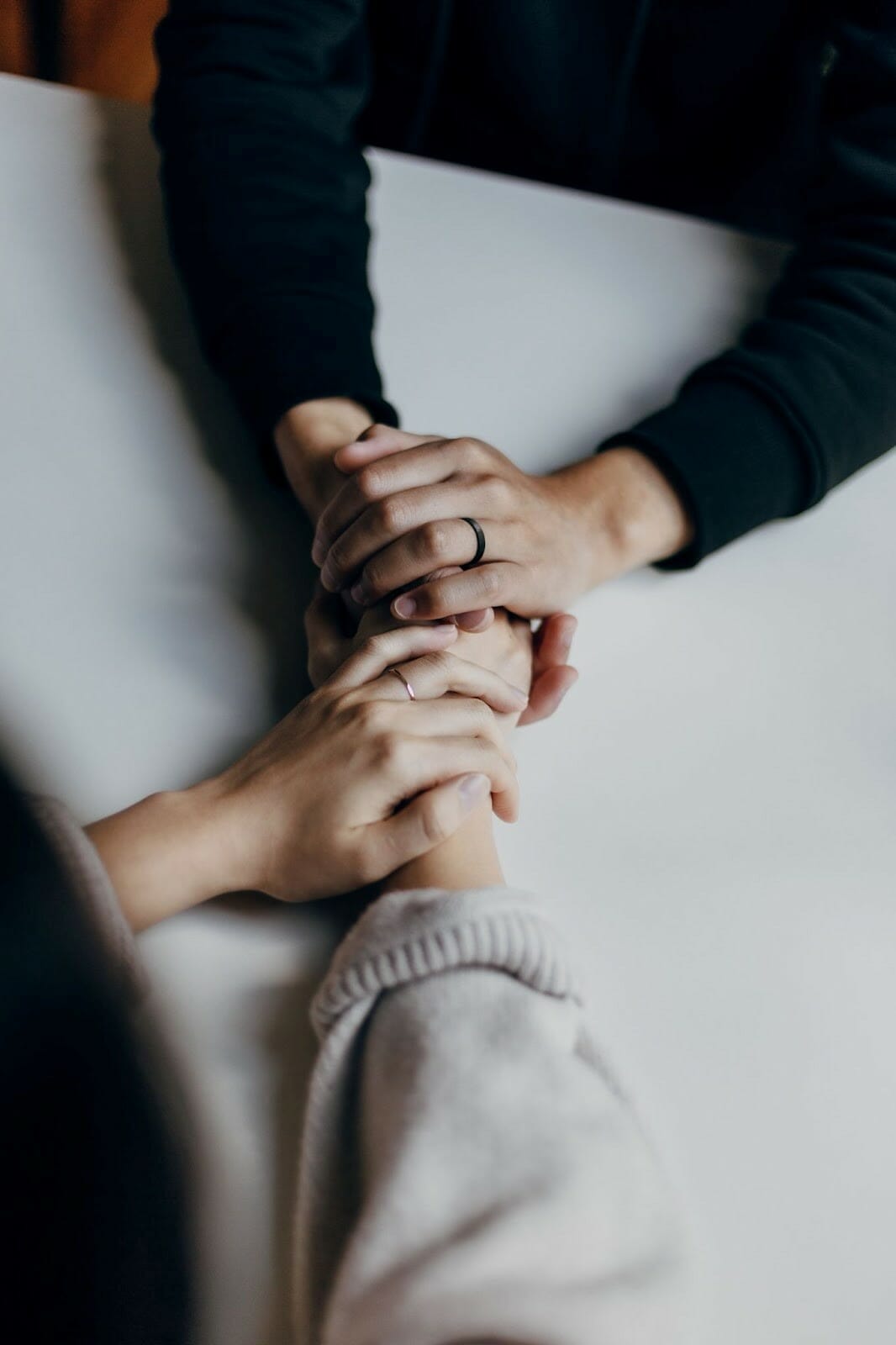
Usually when an issue becomes large enough to classify as an epidemic it becomes a central topic of discussion. Unfortunately, many of us don’t quite know how to handle ourselves when it comes to conversations around suicide.
Suicide as a topic of discussion is somewhat of a taboo in our society for a number of reasons.
Many people are uncomfortable talking about death in any regard. The same can be said for the topic of mental illness. Because discussions about suicide usually require talking about both, the subject is often avoided outright.

This stigma can be incredibly isolating.
For someone struggling with thoughts of suicide, it may prevent them from reaching out for help or talking about how they are feeling. For those who have recently lost a loved one to suicide, they may likewise feel unable to reach out for support.
One of the best means of prevention and support for both victims and survivors is open conversation. We owe it to our communities to get better at talking about suicide. Here are some steps we can all make in the right direction in order to end the stigma.
Destigmatizing the conversation around suicide requires, first, confronting some of the unhelpful ways we speak and act about it. Before we can change the conversation, here are some of the things we need to stop doing:
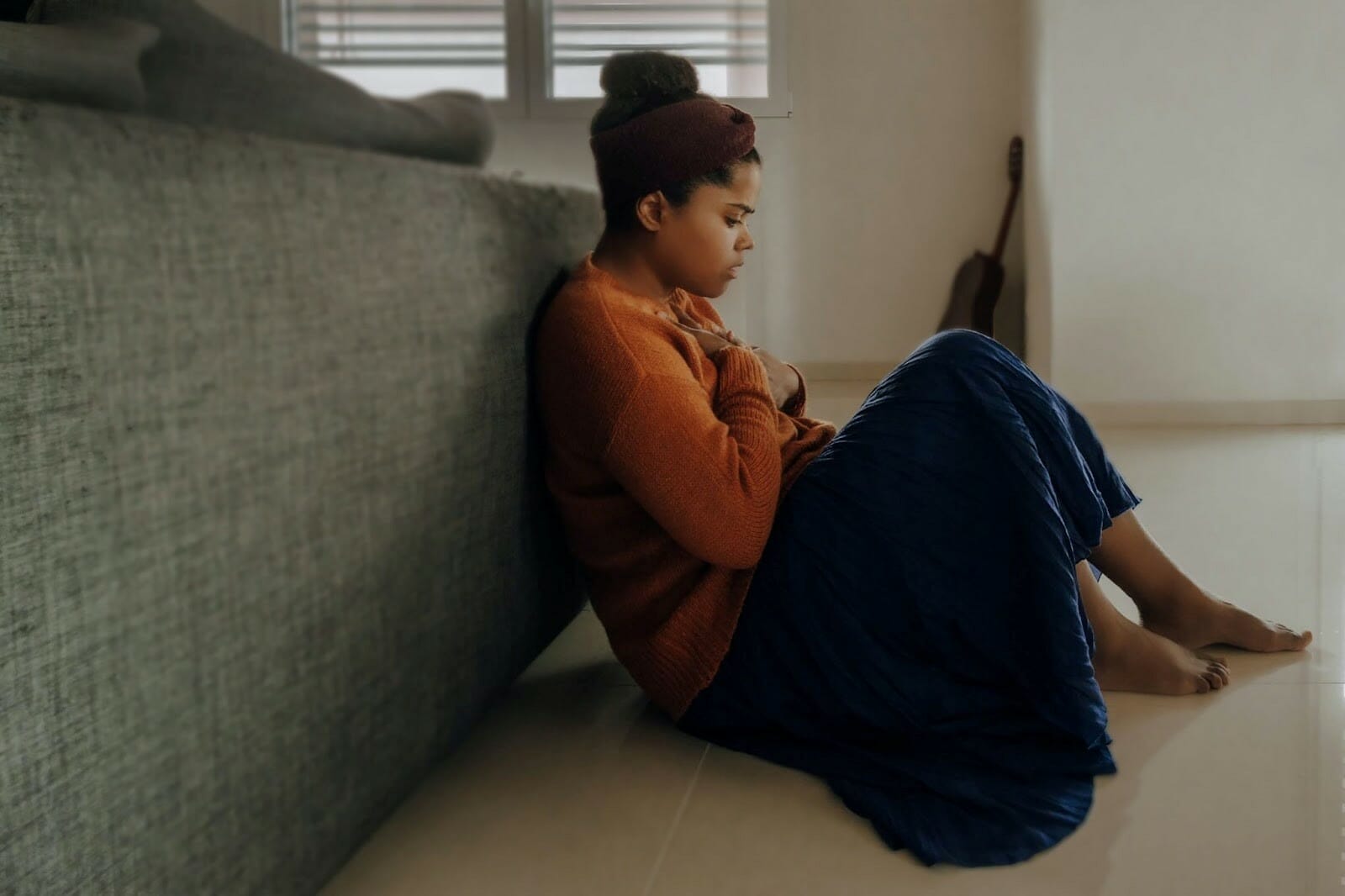
When speaking about suicide, it’s important to recognize that it’s impossible to know who might be struggling.
There is no singular type of person who struggles with mental illness or suicidal ideation. Implying that suicidality should look or present a certain way may increase the feelings of failure and isolation in those who don’t fit the mold.
Often the language around suicide frames it in a way that paints it as criminal or selfish.
This kind of thinking can make people struggling with suicidal thoughts feel ashamed and hesitant to tell anyone they are suffering. It can also make surviving friends and family hesitant to talk about what they’re going through out of fear that their loved one will be judged for taking their own life.
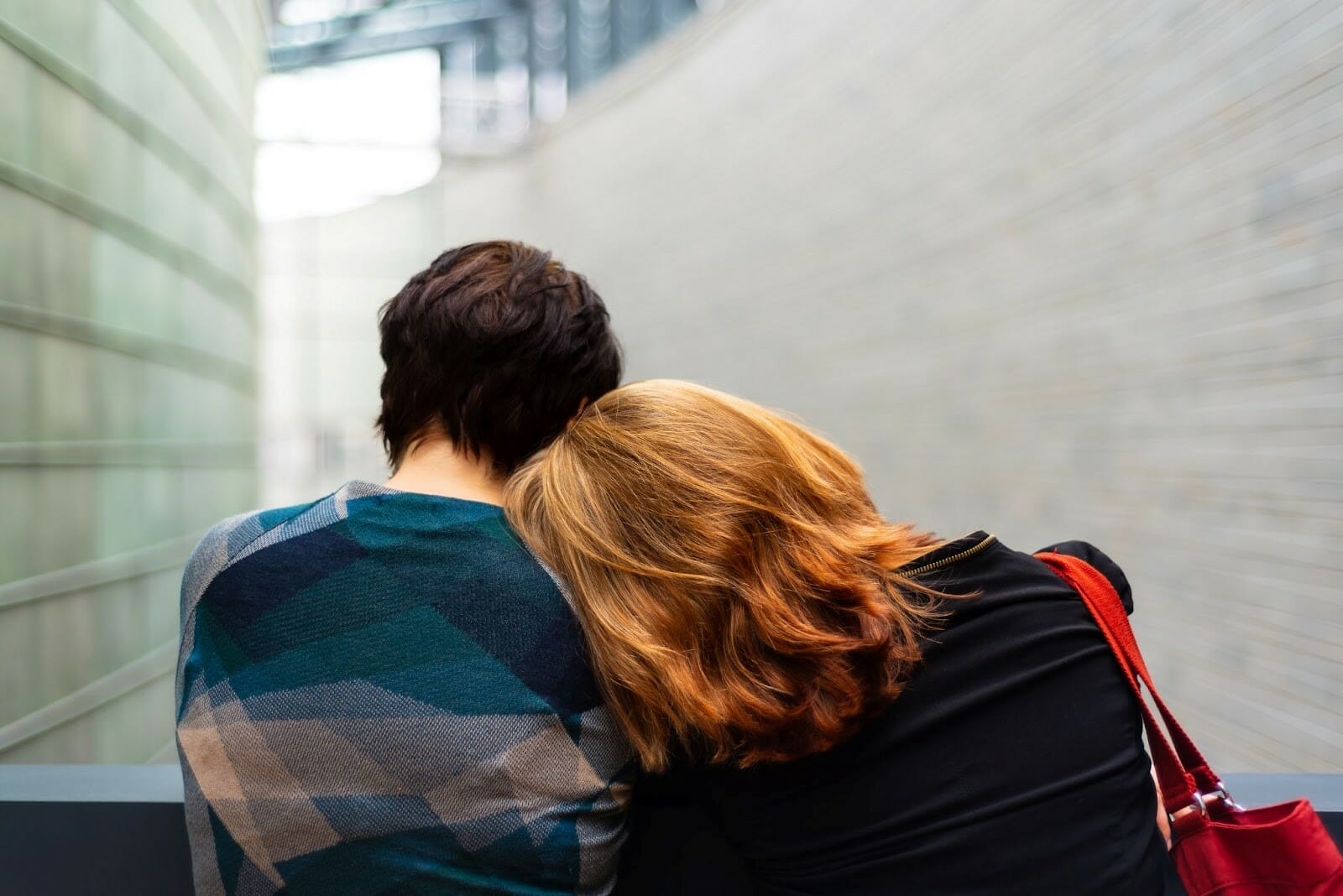
Many people report that after they reach out about struggling with suicidal thoughts people around them start treating them differently. It’s common for members of a family or community to tread extra carefully around a suicidal person as if saying the wrong thing might set them off.
This does not go unnoticed and makes it harder for sufferers to be willing to reach out the next time. Similarly, it can make survivors of suicide feel like their grief is inconvenient or that they are being overemotional.
Reject the idea that depression or grief makes people too fragile to treat normally.

It is never helpful to tell anyone who is struggling for any reason that their pain is insignificant compared to others in the world.
Mental illness affects people regardless of their life situation.
Their pain is real whether or not you think they should be feeling it.
Minimizing will add guilt and only make a person feel worse.
Avoiding discussion of suicide when someone is struggling or has suffered a loss is never helpful. Dodging the topic and pretending everything is fine won’t make the problem go away.
If we stop treating suicide like a dirty word, it will be easier for people to talk about it when they need help.
Knowledge can go a long way toward improving the way we talk about suicide. If you are interested in becoming more comfortable with the topic, a good place to start is learning more about it.

There are many incredible resources that speak in plain language about suicide in a way that is helpful in knowing how to approach the topic. Here are some helpful links to get you started:

As you become more informed, normalize speaking about mental health and suicide in your social circles.
If you have struggled with your own mental health, be willing to speak openly about it. It’s more than likely that others have had similar struggles but have felt alone because of stigma.
Even the way we speak about victims of suicide can be improved by normalizing discussion.

We should be willing to talk about those we have lost to suicide in a way that acknowledges their experience without judgment.
Some people worry this sort of discussion may encourage others to act on their own suicidal thoughts. In fact, the opposite is true.
Open and empathetic acknowledgment of the pain of the victim and the pain of their loss can embolden others to reach out for help without fear of judgment.
One of the best things you can do to destigmatize the discussion of suicide is to become comfortable with asking and listening.

If you suspect somebody is having a difficult time, make it a normal practice to ask them sincerely about how they’re feeling. If they feel you are a safe person to be vulnerable with they are more likely to open up.
Listen to them without judgment and with the intent to understand.
Treat anybody who opens up to you about mental illness or grief as if it is perfectly normal for them to do so. The more calm empathy people receive, the easier it will be for them to talk. The more people someone is able to talk to, the bigger their support system and the better their chances of recovery.
Another important resource built around listening is the 988 Suicide & Crisis Lifeline. This free resource is for anyone experiencing a crisis and it connects people with skilled crisis counselors who listen and provide immediate support. For more information, visit 988lifeline.org or read our dedicated article.
As you become more comfortable speaking about suicide in your own social circles, you can use your voice to help others.

Speak up to advocate for better support and resources in your community.
The more community members and leaders are made aware of the prevalence of suicide, the greater the call will be for improved conversation and support for those who are struggling.
— Whether it’s yourself or a loved one, a suicidal crisis can be a scary thing to navigate. That’s why we at Bio-One hope this guide will help you know how to intervene to keep yourself or the people you love safe. We want to create a future where we never have to answer another suicide call again.

One of the most difficult parts about realizing you may be suicidal is feeling like you can’t talk to anyone about it.
Whether out of shame, or fear of how a loved one will react to finding out, reaching out to someone you know for help can be incredibly paralyzing. This sense of isolation can be dangerous, especially in moments of crisis.
In these discouraging and frightening moments, the 988 Suicide & Crisis Lifeline is there.
The 988 Suicide & Crisis Lifeline is a free resource anyone experiencing a crisis can contact for help.

The Lifeline connects people with skilled crisis counselors who listen and provide immediate support to guide you through the worst of your distress. They can also refer you to resources to help you keep yourself safe in the long term.
The Lifeline is funded by the Substance Abuse and Mental Health Services Administration (SAMHSA) as part of its ongoing mission to reduce suicide rates nationwide.
They work with many local and government suicide prevention organizations to extend their reach everywhere in the United States.
Contacting the Lifeline is as simple as calling or texting 988.
The 988 Lifeline is for anyone who is thinking about suicide, concerned for a friend or loved one, or just in need of emotional support. This means you can call, text, or chat even if you are struggling but not yet in crisis.
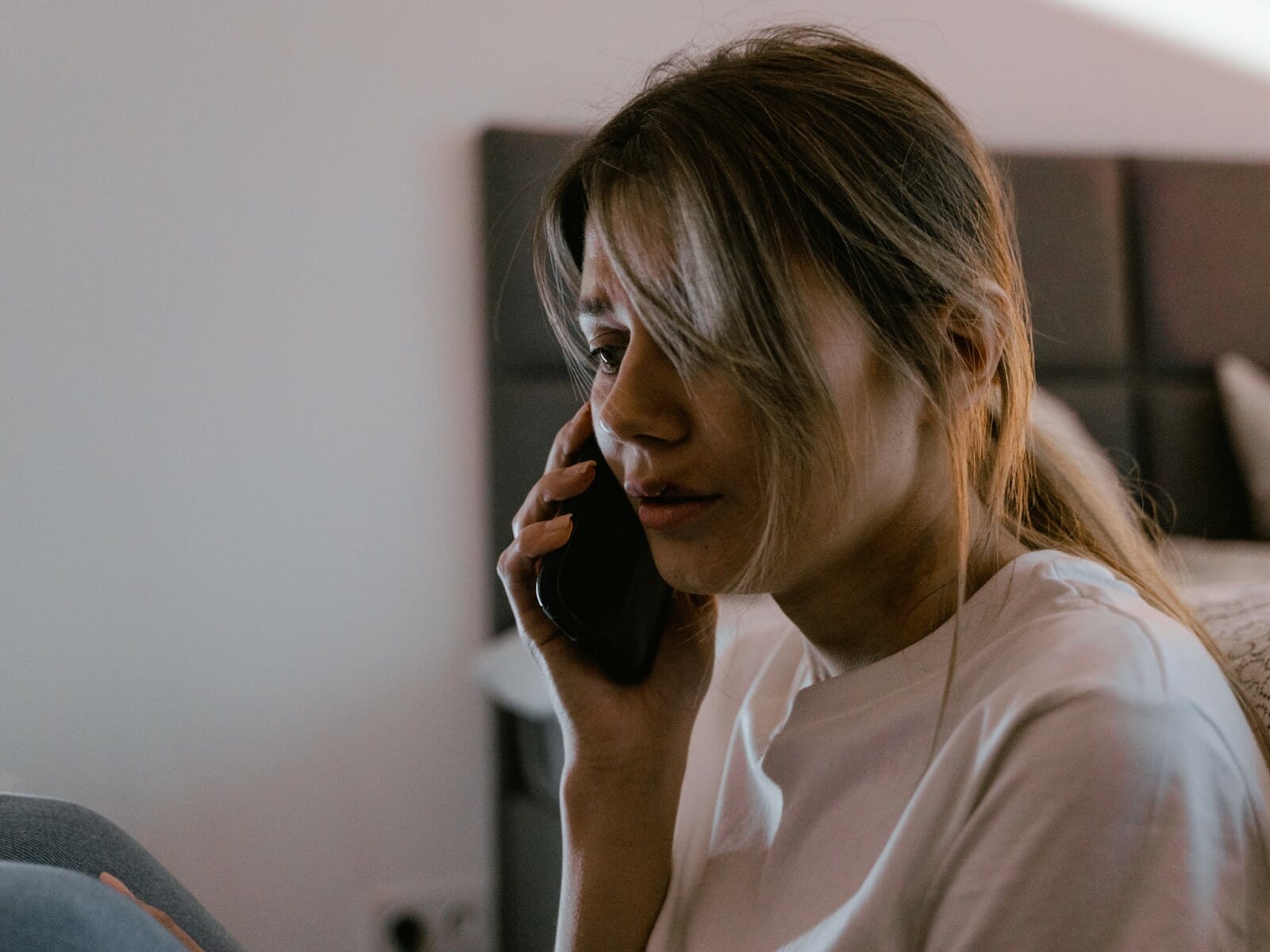
People call the Lifeline for any number of reasons:
These are just a few concerns that may prompt someone to call, but they should illustrate that you don’t need to wait until you’re in severe distress to call.
988 is a crisis service, but not an emergency service. This means if you are in emotional distress but aren’t yet in danger, it is the right time to call. 988 counselors are well-trained in methods to help you steer out of an emotional spiral and ground yourself.
If you or the person you are helping is in immediate danger of harming themselves, call 911 right away.
There are a few different ways you can contact the 988 Lifeline depending on your needs. You can call or send a text to 988, or you can chat with a counselor online at 988lifeline.org. Help is available in English or Spanish, and there are additional options for ASL speakers.

Depending on how you choose to contact the Lifeline, here is what you can expect from the process:
If you call…
You will be greeted by an automated message and a phone tree. If you are a veteran, you can press 1 to be directed to the Veteran Crisis Line. For help in Spanish, you can press 2. Otherwise, you can remain on the line and you will be placed on a brief hold while you are connected to a counselor.
If you text…
After you send a text to 988 requesting help, you will receive a short survey to let the counselor know a little about your situation. After you respond, the text line will connect you to your counselor who will instruct you further.
If you chat…
Similar to the text line, you will receive a short survey asking about your situation so your counselor knows how to help. There will be a short wait time while you are connected, and then your counselor will instruct you further.
Regardless of how you reach out, once you are connected to a counselor, they will listen to your problems and ask you questions to figure out the best way to help you. If needed, they may offer you steps to help you interrupt a panic attack or work your way out of a thought spiral.

Counselors may also walk you through some steps to keep yourself safe until the crisis has passed. Once they have seen to your immediate needs, they may direct you to resources online or in your community to help you find ongoing care for your mental health concerns.
The 988 Lifeline is always free and always confidential, so you never need to worry about reaching out.
Suicide is on the rise and is one of the leading causes of death in our country, but it can be prevented. The 988 Lifeline is making huge strides in prevention efforts by providing people a place to turn when they feel hopeless.

Studies have shown that almost 98% of people who contact the 988 Lifeline are able to work through their crisis without needing emergency services. Having somebody to talk to can make all the difference.
—
Whether it’s yourself or a loved one, a suicidal crisis can be a scary thing to navigate. That’s why we at Bio-One hope this guide will help you know how to intervene to keep yourself or the people you love safe.
Part of our mission is to provide community resources. That’s why we dedicate so much of our time to projects like this. We want to create a future where we never have to answer another suicide call again.

The holiday season is usually seen as a time of great joy and merriment. Christmas, in particular, is when folks try to get together with family and friends in festive spirits. Based on this, amidst all-around celebration and optimism, something somber and tragic is often linked to Christmas – suicides.
Many people believe that Christmas is a time when the risk of suicide reaches its peak. The correlation drawn between suicides and the holiday season is decades old. But is there any grain of truth in all this?
The bio-hazard cleaning experts at Bio-One Savannah are highly sensitive to the immense tragedy of suicide and other forms of unnatural death. In a time of intense grief, we offer top professional and compassionate cleaning services to the family or property owners after a suicide has occurred.
In this blog post, we will explore the facts behind the holiday suicide claims – is it real or just a myth? Let’s start with some basic facts about suicide in the US:
Suicide is the 11th leading cause of death in the United States. In 2021 alone, there were close to 48,180 deaths by suicide – over 130 people were found dead. Almost twice as many people are killed by suicide than homicides across the US.
And that is just the tip of the iceberg. If we look at suicide attempts, there are only rough estimates. Considering the fact that not every attempt at self-inflicted harm results in a death or visit to the hospital ER, we may never know the true picture.
Nonetheless, reports and predictions from experts indicate that there are at least 1.2 million suicide attempts each year in the US. For every death by suicide, there are at least 25 unsuccessful attempts at taking own life. Each day across the country, a suicide attempt takes place once every 26 seconds on average.
We have high-quality historical data about suicide attempts dating back at least to the 1950s. What we've seen over the decades paints a startling picture – after hitting a low in 2000, suicide rates have increased by as much as 30% in the last two decades.
Beginning with a high rate of 13.2 in the post-World War II era in 1950, the suicide rates saw a progressive decline to 10.4 per 100,000 people by the year 2000. Much of that positive change has been attributed to advances in mental health treatments and a steady improvement in economic conditions.
In relation to this, ever since the beginning of the 21st century, things have gone downhill in terms of cases of depression and suicide. By 2018, the suicide rates nationally had exceeded the 1950 levels to reach an all-time high of 14.2 per 100,000 population. There was a temporary dip in those figures during the early stages of the pandemic, reaching 13.48 in 2020.
Since then, the numbers have once again bounced back sharply, and suicide rates reached a new record of 16.1 suicides per 100,000 population. Suicide prevention has been rightfully termed as vital for public health and welfare.
Suicide risk is not evenly distributed across the entire population. For instance, the rates are extremely low among young children below the age of 10. Moreover, based on demographic factors like race, gender, and age, suicide risks can vary to a great degree.
The difference in suicide rates here is quite staggering. Men are up to 3.5 times more likely to commit suicide than women in the United States. This gap has remained more or less constant since at least the 1950s.
Among men, the risk is higher as they age. The rate is around 28.3 between the ages 25-44 and 27.4 between 45-64. But the highest risk comes after the age of 75 for men – the suicide rate is a whopping 40.5 per 100,000 population.
Among women, the peak risk comes after the age of 45. The suicide rate for females is 7.2 between the ages 25-44, and it reaches a peak of 7.9 between ages 45-64. The risk falls off considerably after the age of 65 in women. In 2023, the age-adjusted suicide rate was 25 for men and 7.5 for women in the United States.
There are significant differences in the chosen suicide methods as well. Men prefer using a gun (57.9%), followed by suffocation (26.7%). Among women, the primary means of suicide are firearms (33%), suffocation (29%), and poisoning (28.6%).
In absolute numbers, the majority of suicides involve middle-aged white men. Going by percentage rate among the population, Native Americans had the highest rate of 37.4 per 100,000, followed by white males at 27 per 100,000.
African American, Asian, and Hispanic populations had the lowest rates of 12.9, 10.3, and 12.3, respectively, per 100,000. The rates for women are largely similar, with Native American and White populations showing higher rates of suicide than others.
The following are the broad rates per 100,000 for each age group, including both men and women at present:
Teenagers tend to have lower suicide rates than adults, contrary to many news reports and popular perceptions. The rates are much higher for young adults and senior citizens. But the youth are nevertheless at risk of suicide attempts, with 8.9% reporting an attempt in 2019.
According to WHO figures, the global death toll from suicide each year is around 700 million. It was also the fourth leading cause of death among adolescents/young adults between 15 and 29 years of age in 2019.
Over 77% of all suicides take place in lower-income countries, with pesticide ingestion a very popular option in countries where firearms are not readily available. The US does not rank among the top 25 nations in terms of age-adjusted suicide rates. Here are the top 5 nations:
The actual reasons for suicide are quite varied and complex. Mental disorders, stress (particularly due to a sudden onset of crisis), depression, and alcohol abuse, are all major factors. Financial issues, relationship crises, loss of a partner, father, or mother, and chronic pain or illness are all common stressors.
Discriminated minorities, such as indigenous people and members of the LGBTQ community, are at higher risk of death by suicide. Natural disasters, conflicts, and forms of violence can also push people toward suicide attempts.
Suicide rates are not evenly distributed across different states in the country. Alaska and the Western and Northwestern states have higher rates, particularly in the rural areas. California is a notable exception, with generally lower rates.
As for the state of Georgia, it sits 31st on the table of states with the highest incidence of suicides in the United States. The age-adjusted rate in the state is higher than in other states in the South.
Suicide also ranks as the second leading cause of death among youth in Georgia. Savannah falls under Chatham County in Region 5, which reported the highest rate of suicides among teens in 2019, according to official figures from Atlanta police.
If you have faced the trauma of suicide on your property or family home in Savannah, GA, Bio-One Savannah is prepared to offer you quick, reliable, and compassionate service. Our team of certified experts is equipped with high-tech resources. We are available 24/7 to handle the cleaning and disinfection of all contaminated surfaces in accordance with both state and federal laws.
Be it the cleanup of homes, vehicles, or commercial property, our specialists are trained to address all conditions. We are dedicated to handling your unique needs with utmost care and caution under the latest OSHA guidelines for maximum safety. To request our suicide cleanup services, give us a call at 912-755-1211, or use the contact us form here
The supposed link between Christmas and suicides is a myth that is not backed by any factual observations or real-world data. The fact is that the rate of suicides does not increase during the holidays. Let us look at some of the reasons to debunk the myth of higher suicide rates during the Christmas and holiday seasons.
Contrary to popular belief, the holidays do not make people feel more miserable and increase the chance of a suicide attempt. In reality, the opposite is true – all the positivity and merriment act as a buffer against depression and suicidal thoughts in many individuals.
As long as they are not isolated and cooped up in their rooms, they can attend social events. partying and dancing during Christmas and other winter holidays keep people distracted from their suicidal impulses. Social gatherings provide excellent support against suicidality.
Taking your own life is not an easy task. It takes a lot of energy (both mental and physical) to successfully carry out the act. This is why most suicides happen in the warmer months and not in winter.
In regions with cold and darker winters, the human body has less energy to spare. We end up more lethargic in order to conserve body heat. The same phenomenon is also responsible for significantly reducing the rate of suicides during the holiday season.
The urge to end your life is a highly complex feeling which is usually driven by a wide range of psychological factors. Mental illness, depression, anxiety, and stress can all play a part. A unique set of factors drives each individual.
While it may sound convenient to attribute many suicides to a single universal cause, that would be a gross oversimplification of things. Sure, people do end up feeling suicidal around this time – but it is often rooted in very negative personal experiences from the past, not just a general aversion to the holiday season.
But in other instances, it can also be inspired by external stimuli – when a person sees news of suicides involving an actress or other celebrities, it can trigger impulses that lead to “copycat suicides.” This is a reason why we have journalistic rules and standards when covering suicides in the media - for the sake of suicide prevention.
Nobody knows for sure when the myth of high suicide rates at Christmas first started. Some experts attribute at least part of the blame to movies like “It’s a Wonderful Life,” where the lead character contemplates suicide during the holidays.
Seasonal Affective Disorder is commonly cited as another reason to back the claim. A form of depression triggered by changes in the season can happen at any time of the year, not just during winter. The condition is also linked to bipolar disorder, which also increases the risk of suicide.
Journalists and news media have also played a key role in at least perpetuating the myth, if not actually creating it. Despite the availability of data that debunks the claim, many journalists fail to do due diligence before publishing articles on the trend.
While we can say with confidence that Christmas suicides are indeed a myth, there is another aspect to it worth considering. Christmas and social interaction can act as a buffer against suicidal urges during December.
But once we pass the holiday season and enter January, those same suppressed urges and depressive traits can often come back with a vengeance. Over the decades, researchers have noticed a decline in suicides in December, followed by an uptick in rates during January, a phenomenon called the “January rebound.”
Suicides can be incredibly traumatic situations, whether it happens in your family or if it involves a complete stranger found inside your vehicle or on your property. Depending on the method used, a suicide can leave significant biological contamination in and around the surroundings.
Suicide scene clean-up is not something anyone can or should do as a DIY project. For community health and safety reasons, there are strict laws at both the state and federal levels on the handling and disposal of human remains and bio-waste.
If you are based in Savannah, GA, or nearby areas, you can rely on Bio-One Savannah for fast, compassionate, and discreet cleanup services. Our industry-leading experts are fully certified, trained, and experienced in handling and disposing of biological contaminants resulting from suicide.
If you wish to request Savannah suicide cleanup services at any time of the day, Bio-One is here to help you round the clock on all days of the week. Give us a call at 912-755-1211, or book an appointment online today using this link.
If you or someone you know may be considering suicide, contact the National Suicide Prevention Lifeline at 1-800-273-8255 (en español: 1-888-628-9454; deaf and hard of hearing: dial 711, then 1-800-273-8255) or the Crisis Text Line by texting HOME to 741741.

According to the American Psychiatric Association, suicide is the 10th leading cause of death in the United States and the second leading cause of death (after accidents) for people aged 10 to 34. And according the CDC, published reports from 2020 suggest that the pandemic has had a negative effect on children’s mental health.
“Beginning in April 2020, the proportion of children’s mental health–related ED visits among all pediatric ED visits increased and remained elevated through October. Compared with 2019, the proportion of mental health–related visits for children aged 5–11 and 12–17 years increased approximately 24%. and 31%, respectively.”
Researchers have yet to link recent suicides to the pandemic since 2020 suicide data is not yet available. But on the ground, there's growing concern.
The February 2021 NPR article “Child Psychiatrists Warn That The Pandemic May Be Driving Up Kids' Suicide Risk” explores possible correlation. Takeaways include:
For ways to help kids at risk, NPR encourages readers to read Part 2 of their story, “Make Space, Listen, Offer Hope: How To Help A Child At Risk Of Suicide”.
Suicide Prevention Resources
Survivors of Suicide – What to Do Next
The loss of a loved one by suicide can be a deeply painful and traumatizing experience; however, it’s important to know that everyone experiences suicide loss in their own way. As you begin the process of healing, consider reading the American Foundation for Suicide Prevention’s guide for to talk to others about what happened and identify ways to take care of yourself.
Additionally, if you have lost someone to suicide, there may be a cleanup required. There is no need for family or friends of the loved one to be further traumatized or overwhelmed with trying to figure out how to clean the impacted area. Bio-One is here for you. Learn more about Bio-One’s suicide remediation services.
If you or someone you know may be considering suicide, contact the National Suicide Prevention Lifeline at 1-800-273-8255 (en español: 1-888-628-9454; deaf and hard of hearing: dial 711, then 1-800-273-8255) or the Crisis Text Line by texting HOME to 741741.